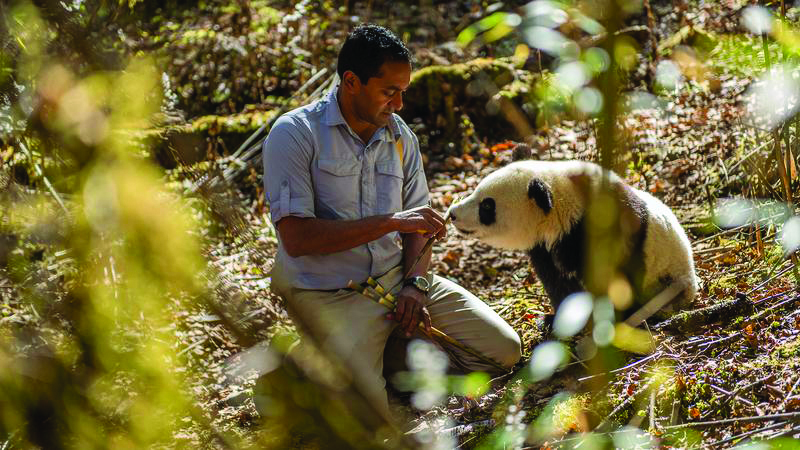Earth: A New Wild woos viewers with eye-opening shots of wild animals and landscapes. The new documentary television series calls for empathy toward nature. But with its contrived drama and optimism, the show often disappoints.
The series, which premiered February 4 on PBS, envisions a natural world in which human beings and wildlife depend greatly on one another. Each episode focuses on a particular ecosystem, highlighting several locations in which humans interact with animals. Host and conservation scientist Muttulingam Sanjayan sets the tone from the very start. “My mission is to tell you an untold story,” he says, “where we humans are not separate from nature; we are part of it.”
Using advanced filming techniques, the documentary traces the close relationships between humans and wildlife in nearly 30 countries. When we envision “the wild,” we typically imagine untamed animals thriving in the absence of human contact. Past natural history programs have largely sustained this misconception by portraying humanity’s potential to disrupt natural landscapes. But the new National Geographic and Passion Planet production puts equal emphasis on humanity’s potential to protect these natural landscapes. Vivid shots, coupled with Sanjayan’s earnest narrations, ensure that this message cannot be missed.
The premiere, titled “Home,” features efforts such as the reintroduction of captive pandas to the mountains of China and the preservation of tigers in Bangladesh. The episode provides the audience with an inside look at wildlife conservation with Sanjayan as a guide. Some segments, however, are presented with melodrama worthy of an eye roll: harrowing sound effects and slow motion pans of a tiger chasing its prey seem better suited to a crime show like CSI. Although Sanjayan tries to excite his audience, his hosting adds little substance to the series. Instead, his lackluster camera presence often detracts from breathtaking footage of the places he visits. His voiceovers monotonously run throughout a majority of the show, and uses mostly banal and exaggerated vocabulary.
The saving grace of Earth: A New Wild is its captivating documentation of wild animals in action. We get to see battles between male Saiga antelope and dances of prairie dogs. The series proves to have the noble intention of changing anthropocentric attitudes. For latent nature-lovers, the program may be worth watching on lazy days. For the rest of us, there are more compelling nature shows out there.
Cover Image: Earth: A New Wild premiered on February 4 with an episode called “Home.” Image courtesy of PBS.

